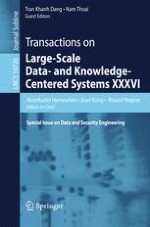2017 | OriginalPaper | Chapter
One-Class Collective Anomaly Detection Based on LSTM-RNNs
Authors : Nga Nguyen Thi, Van Loi Cao, Nhien-An Le-Khac
Published in: Transactions on Large-Scale Data- and Knowledge-Centered Systems XXXVI
Publisher: Springer Berlin Heidelberg
Activate our intelligent search to find suitable subject content or patents.
Select sections of text to find matching patents with Artificial Intelligence. powered by
Select sections of text to find additional relevant content using AI-assisted search. powered by
